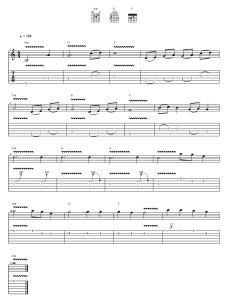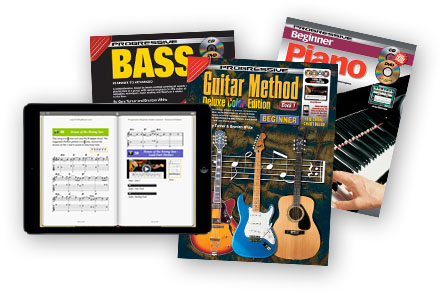What is Improvisation?
Improvisation in music can be defined as the spontaneous creation of a melody line. For beginning guitarists it can sometimes be difficult to improvise or learn how to write a guitar solo which does not sound repetitive, by playing the same few notes and melody lines over and over. However, repetition is an important part of “musical communication”, and is used in all famous guitar solos. In that sense, playing a guitar solo is similar to telling a story, such as one told in a book, TV show, or a movie. It has a beginning, a middle, and an end. Guitar solos are constructed in a similar way; it is the spontaneous creation of a melodic story.
Over the course of this blog post there will be a few ideas you can think about and experiment with in order to learn how to improvise better. Also, see if you can recognize these in the guitar solos of your favorite players. But first, it’s important to understand some of the fundamental parts that make up a guitar solo.
Technique (scale patterns, performance techniques)
After the key of the chord progression you are soloing over is determined, it’s a good idea to practice the scales and pentatonic scales of that key by playing these over this chord progression. You could use a backing track or play with a friend. These notes are the total sum of soloing options. This will improve confidence and give you more freedom, knowing that all these notes will sound good, at anytime, in any order.
Performance techniques such as bends, slides, vibrato, hammer-ons and pull-offs add expression and bring life to a solo.
Phrasing (“call and response”)
Another important improvisation technique is to play something in response to what you have just played before. This could be done by playing variations of the same idea, playing the same idea fast or slower or even by repeating the same notes in a different octave. This is called “question and answer,” or “call and response.” In order to do this you will have to listen to your own playing. It may be difficult to get the hang of this at first, but practice and persistence will pay off.
Contour or Shape (high or low)
Many guitar solos begin with low notes and gradually climb up the guitar fretboard using higher notes. This so called “rising action” creates movement, direction and builds excitement. Similar to a movie which starts out slow and all of a sudden has a lot of action.
Vocabulary (licks and ideas of other guitarists)
It’s a good idea to learn and incorporate licks and ideas of other guitarists when you improvise. These quotes make a guitar solo more recognizable for both you and a listener. These ideas have worked for your favorite guitarists and they will work for you. They will also give you new options and possibilities you might not have thought of on your own. This is something all musicians do. Taking someone else’s idea and modifying it by adding your own ideas to it is how music and guitar playing evolves.
As an example here is a solo over the following famous chord progression demonstrating these ideas:
||: Am | G | F | :||x4
This chord progression has one bar of Am, one bar of G and two bars of F and is in the key of A minor. The length of the example solo is four times through the chord progression and ends on the Am chord.
The scales that are used are the A pentatonic minor scale and the A minor scale, as shown.
Fretboard Diagrams
A Pentatonic Minor Scale
A Natural Minor Scale
Notation in Tablature
A Pentatonic Minor Scale
A Natural Minor Scale
In Summary
Notice the use of various performance techniques such as slides, bends, hammer-ons and vibrato which can all contribute to make even the easiest of solos come to life and sound very musical.
Notice the use of repetition, the variations on the same ideas, and the question and answer concept in phrasing. Every idea responds to the idea that was stated before.
Notice also the contour or shape of the solo. It starts out using low notes and gradually moves towards the higher notes in the scale patterns.
A Final Solo
Here is an example solo to practice the topics covered in this post. Bars 9 through 12 use a very common Blues lick which has become a Rock/Blues staple. Click the image to enlarge it.
About the Author
Daniel Coffeng is an honors graduate from the Guitar Institute of Technology and is a Los Angeles, CA based performing guitarist, freelance studio musician and music educator specializing in modern contemporary guitar.
– Continue learning with Learn To Play Music at LearnToPlayMusic.com




































Leave A Comment
You must be logged in to post a comment.